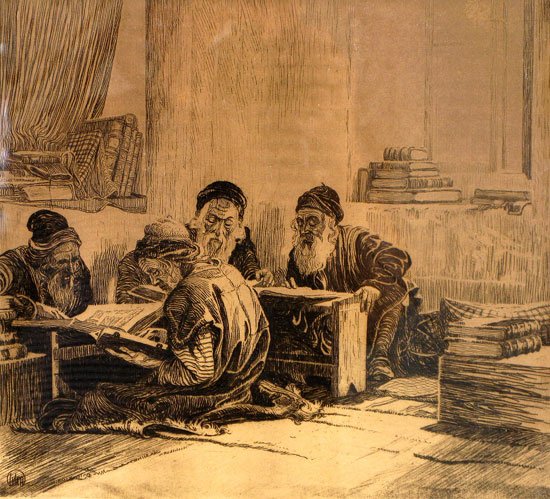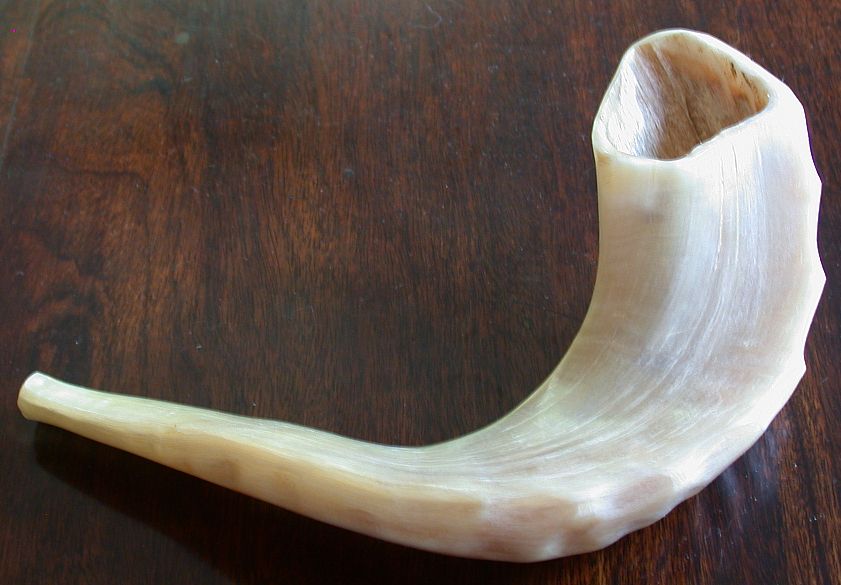|
Mishawites
The Okbarites (), also known as the Mishwaites, were a Jewish sect founded by the 9th-century heresiarch Meshwi al-Ukbari (). The sect derived its name from the city of Ukbara, near Baghdad, said to have been Meshwi's place of residence. History According to Jacob Qirqisani, Meshwi al-Ukbari lived after ; his original name was Moses, but it was converted by his adversaries into "Meshwi" ('one whose ideas are confused'). Judah Hadassi, on the authority of David ibn Merwan al-Muḳammaṣ, gives the name of the founder of the sect as Moses of Baalbek, who is probably identical with Meshwi al-Ukbari. §98. From a passage in the ''Oẓar Neḥmad'' of the Karaite , Delitzsch concluded that Meshwi embraced Christianity in the later part of his life. Isaac Broydé disputed this, arguing that the sect likely would not have survived the apostasy of its founder, yet Meshwi still had followers at the time of Qirqisani. There is evidence that a Mishwaite community existed in Byzantium as la ... [...More Info...] [...Related Items...] OR: [Wikipedia] [Google] [Baidu] |
Karaite Judaism
Karaite Judaism or Karaism is a Rabbinic Judaism, non-Rabbinical Jewish religious movements, Jewish sect characterized by the recognition of the written Tanakh alone as its supreme religious text, authority in ''halakha'' (religious law) and theology. Karaites believe that all of the Mitzvah, divine commandments which were handed down to Moses by God were recorded in the written Torah without any additional Oral Torah, Oral Law or explanation. Unlike mainstream Rabbinic Judaism, which regards the Oral Torah, codified in the Talmud and subsequent works, as authoritative interpretations of the Torah, Karaite Jews do not treat the written collections of the oral tradition in the Midrash or the Talmud as binding. Karaite interpretation of the Torah strives to adhere to the plain or most obvious meaning (''peshat'') of the text; this is not necessarily the literal meaning of the text—instead, it is the meaning of the text that would have been naturally understood by the ancient He ... [...More Info...] [...Related Items...] OR: [Wikipedia] [Google] [Baidu] |
Rabbinic Judaism
Rabbinic Judaism (), also called Rabbinism, Rabbinicism, Rabbanite Judaism, or Talmudic Judaism, is rooted in the many forms of Judaism that coexisted and together formed Second Temple Judaism in the land of Israel, giving birth to classical rabbinic Judaism, which flourished from the 1st century CE to the final redaction of the Babylonian Talmud in c. 600. Mainly developing after the destruction of the Jerusalem Temple (70 CE), it eventually became the normative form of Judaism. Rabbinic Judaism has been an orthodox form of Judaism since the 6th century CE, after the codification of the Babylonian Talmud. It has its roots in the Pharisaic school of Second Temple Judaism and is based on the belief that Moses at Mount Sinai received both the Written Torah (''Torah she-be-Khetav'') and the Oral Torah (''Torah she-be-al Peh'') from God. The Oral Torah explains the Written Torah, and it was the rabbis claimed that it was them who possessed this memorized and orally transmitte ... [...More Info...] [...Related Items...] OR: [Wikipedia] [Google] [Baidu] |
Jewish Iraqi History
Jews (, , ), or the Jewish people, are an ethnoreligious group and nation, originating from the Israelites of ancient Israel and Judah. They also traditionally adhere to Judaism. Jewish ethnicity, religion, and community are highly interrelated, as Judaism is their ethnic religion, though it is not practiced by all ethnic Jews. Despite this, religious Jews regard converts to Judaism as members of the Jewish nation, pursuant to the long-standing conversion process. The Israelites emerged from the pre-existing Canaanite peoples to establish Israel and Judah in the Southern Levant during the Iron Age. John Day (2005), ''In Search of Pre-Exilic Israel'', Bloomsbury Publishing, pp. 47.5 8'In this sense, the emergence of ancient Israel is viewed not as the cause of the demise of Canaanite culture but as its upshot'. Originally, Jews referred to the inhabitants of the kingdom of JudahCf. Marcus Jastrow's ''Dictionary of the Targumim, Talmud Babli, Talmud Yerushalmi and Mid ... [...More Info...] [...Related Items...] OR: [Wikipedia] [Google] [Baidu] |
9th-century Judaism
The 9th century was a period from 801 (represented by the Roman numerals DCCCI) through 900 (CM) in accordance with the Julian calendar. The Carolingian Renaissance and the Viking raids occurred within this period. In the Middle East, the House of Wisdom was founded in Abbasid Baghdad, attracting many scholars to the city. The field of algebra was founded by the Muslim polymath al-Khwarizmi. The most famous Islamic scholar Ahmad ibn Hanbal was tortured and imprisoned by Abbasid official Ahmad ibn Abi Du'ad during the reign of Abbasid caliph al-Mu'tasim and caliph al-Wathiq. In Southeast Asia, the height of the Mataram Kingdom happened in this century, while Burma would see the establishment of the major kingdom of Pagan. Tang China started the century with the effective rule under Emperor Xianzong and ended the century with the Huang Chao rebellions. In America, the Maya experienced widespread political collapse in the central Maya region, resulting in internecine warfare, t ... [...More Info...] [...Related Items...] OR: [Wikipedia] [Google] [Baidu] |
Animal Fat
Animal fats are lipids derived from animals which are used by the animal for a multitude of functions, or can be used by humans for dietary, sanitary, and cosmetic purposes. Depending on the temperature of the fat, it can change between a solid state and a liquid ( oil) state. Chemically, both fats and oils are composed of triglycerides. Although many animal parts and secretions may yield oil, in commercial practice, oil is extracted primarily from rendered tissue fats from livestock animals like pigs, chickens and cows. Dairy products yield animal fat and oil products such as butter. Chemical structure Animal fats are composed of triglycerides, which are a type of ester molecule in which glycerol is bonded to three fatty acids. The three fatty acids that bond to the glycerol will determine the complexity and type of the triglyceride. If the three fatty acids are the same, then the triglyceride will be considered a simple triglyceride. However, most triglycerides contain diff ... [...More Info...] [...Related Items...] OR: [Wikipedia] [Google] [Baidu] |
Chelev
Chelev (, ''ḥēleḇ''), "suet", is the animal fats that the Torah prohibits Jews and Israelites from eating. Only the ''chelev'' of animals that are of the sort from which offerings can be brought in the Tabernacle or Temple are prohibited (). The prohibition of eating ''chelev'' is also, in addition to the Torah, one of the 613 commandments that, according to the Talmud, were given to Moses on Mount Sinai. Hebrew Bible Hebrew language In Biblical Hebrew, the word for fat is ''chelev'' (חֵלֶב), and it is first used for the "fats" of Abel's offering, and most often used for fats of animal sacrifices on the altar of the Tabernacle or Temple. The same word is also used in the phrase "the fat of the land." Rabbinical interpretation The punishment for eating ''chelev'' bemeizid (on purpose) is kareth (exclusion from the after life). The atonement for eating it by mistake is to bring a korban hattath (atonement sacrifice). The prohibition on ''chelev'' is only regar ... [...More Info...] [...Related Items...] OR: [Wikipedia] [Google] [Baidu] |
Halakha
''Halakha'' ( ; , ), also Romanization of Hebrew, transliterated as ''halacha'', ''halakhah'', and ''halocho'' ( ), is the collective body of Judaism, Jewish religious laws that are derived from the Torah, Written and Oral Torah. ''Halakha'' is based on biblical commandments (''Mitzvah, mitzvot''), subsequent Talmudic and Mitzvah#Rabbinic mitzvot, rabbinic laws, and the customs and traditions which were compiled in the many books such as the ''Shulchan Aruch'' or ''Mishneh Torah''. ''Halakha'' is often translated as "Jewish law", although a more literal translation might be "the way to behave" or "the way of walking". The word is derived from the Semitic root, root, which means "to behave" (also "to go" or "to walk"). ''Halakha'' not only guides religious practices and beliefs; it also guides numerous aspects of day-to-day life. Historically, widespread observance of the laws of the Torah is first in evidence beginning in the second century BCE, and some say that the first evide ... [...More Info...] [...Related Items...] OR: [Wikipedia] [Google] [Baidu] |
Temple In Jerusalem
The Temple in Jerusalem, or alternatively the Holy Temple (; , ), refers to the two religious structures that served as the central places of worship for Israelites and Jews on the modern-day Temple Mount in the Old City of Jerusalem. According to the Hebrew Bible, the Solomon's Temple, First Temple was built in the 10th century BCE, during the reign of Solomon over the Kingdom of Israel (united monarchy), United Kingdom of Israel. It stood until , when it was destroyed during the Siege of Jerusalem (587 BC), Babylonian siege of Jerusalem. Almost a century later, the First Temple was replaced by the Second Temple, which was built after the Neo-Babylonian Empire was conquered by the Achaemenid Empire, Achaemenid Persian Empire. While the Second Temple stood for a longer period of time than the First Temple, it was likewise destroyed during the Siege of Jerusalem (70 CE), Roman siege of Jerusalem in 70 CE. Projects to build the hypothetical "Third Temple" have not come to fruit ... [...More Info...] [...Related Items...] OR: [Wikipedia] [Google] [Baidu] |
Passover
Passover, also called Pesach (; ), is a major Jewish holidays, Jewish holiday and one of the Three Pilgrimage Festivals. It celebrates the Exodus of the Israelites from slavery in Biblical Egypt, Egypt. According to the Book of Exodus, God in Judaism, God commanded Moses to tell the Israelites to slaughter a lamb and mark their doorframes with its blood, in addition to instructions for consuming the lamb that night. For that night, God would send the Destroying angel (Bible), Angel of Death to bring about the Plagues of Egypt, tenth plague, in which he would Plagues of Egypt#plague10, smite all the firstborn in Egypt. But when the angel saw the blood on the Israelites' doorframes, he would ''pass over'' their homes so that the plague should not enter (hence the name). The story is part of the broader Exodus narrative, in which the Israelites, while living in Egypt, are enslaved en masse by the Pharaoh to suppress them; when Pharaoh refuses God's demand to let them go, God sends ... [...More Info...] [...Related Items...] OR: [Wikipedia] [Google] [Baidu] |
Shabbat
Shabbat (, , or ; , , ) or the Sabbath (), also called Shabbos (, ) by Ashkenazi Hebrew, Ashkenazim, is Judaism's day of rest on the seventh day of the seven-day week, week—i.e., Friday prayer, Friday–Saturday. On this day, religious Jews remember the biblical stories describing the Genesis creation narrative, creation of the heaven and earth in six days and the redemption from slavery and the Exodus from Egypt. Since the Hebrew calendar, Jewish religious calendar counts days from sunset to sunset, Shabbat begins in the evening of what on the civil calendar is Friday. Shabbat observance entails refraining from 39 Melachot, work activities, often with shomer Shabbat, great rigor, and engaging in restful activities to honor the day. Judaism's traditional position is that the unbroken seventh-day Shabbat originated among the Jewish people, as their first and most sacred institution. Variations upon Shabbat are widespread in Judaism and, with adaptations, throughout the Abraham ... [...More Info...] [...Related Items...] OR: [Wikipedia] [Google] [Baidu] |
Yom Kippur
Yom Kippur ( ; , ) is the holiest day of the year in Judaism. It occurs annually on the 10th of Tishrei, corresponding to a date in late September or early October. For traditional Jewish people, it is primarily centered on atonement and repentance. The day's main observances consist of full fasting and asceticism, both accompanied by extended prayer services (usually at synagogue) and sin confessions. Some minor Jewish denominations, such as Reconstructionist Judaism, focus less on sins and more on one's goals and accomplishments and setting yearly intentions. Alongside the related holiday of Rosh Hashanah, Yom Kippur is one of the two components of the High Holy Days of Judaism. It is also the last of the Ten Days of Repentance. Name The formal Hebrew name of the holiday is , 'day fthe atonements'. This name is used in the Bible, Mishnah, and Shulchan Aruch. The word 'atonement' is one of many Biblical Hebrew words which, while using a grammatical plural form, ... [...More Info...] [...Related Items...] OR: [Wikipedia] [Google] [Baidu] |
Hebrew Calendar
The Hebrew calendar (), also called the Jewish calendar, is a lunisolar calendar used today for Jewish religious observance and as an official calendar of Israel. It determines the dates of Jewish holidays and other rituals, such as '' yahrzeits'' and the schedule of public Torah readings. In Israel, it is used for religious purposes, provides a time frame for agriculture, and is an official calendar for civil holidays alongside the Gregorian calendar. Like other lunisolar calendars, the Hebrew calendar consists of months of 29 or 30 days which begin and end at approximately the time of the new moon. As 12 such months comprise a total of just 354 days, an extra lunar month is added every 2 or 3 years so that the long-term average year length closely approximates the actual length of the solar year. Originally, the beginning of each month was determined based on physical observation of a new moon, while the decision of whether to add the leap month was based on observation ... [...More Info...] [...Related Items...] OR: [Wikipedia] [Google] [Baidu] |






